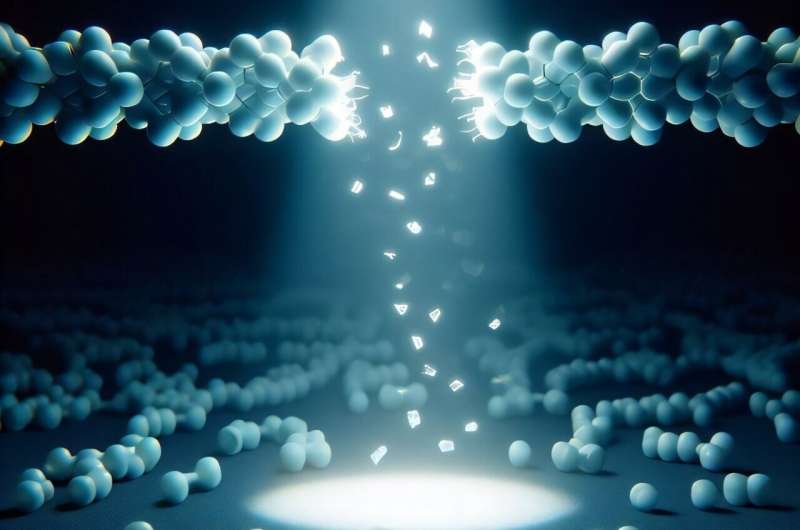
Researchers at the Eindhoven University of Technology have developed a groundbreaking approach to plastic recycling that utilizes LED light to create and decompose high-performance plastics. Led by Assistant Professor Fabian Eisenreich, this innovative method promises to revolutionize the way plastics are processed, enabling truly circular recycling without any degradation in quality.
Revolutionizing Plastic Waste Management
This research, published on August 15, 2025, in the Rising Stars edition of Advanced Materials, highlights the potential for sustainable chemistry to reshape plastic waste management. Currently, traditional recycling methods often result in the deterioration of polymer chains, ultimately necessitating the production of new plastics. Eisenreich’s team focuses on developing polymers designed for chemical closed-loop recycling, allowing the recovery of original building blocks for reuse.
Eisenreich explains, “Plastics typically consist of moldable polymer chains. Due to the current recycling methods—primarily heating, melting, and reshaping—the quality of those chains deteriorates over time.” This deterioration means traditional recycling is not a sustainable long-term solution. Instead, the researchers aim to achieve a process where polymer chains can be selectively broken down and rebuilt, maintaining the same properties and quality.
Photochemical Recycling Breakthrough
At the heart of this research is the concept of photochemical recycling, which Eisenreich describes as both a challenge and an opportunity. “Making polymers with light is relatively simple. The real challenge is breaking them down and reforming them using the same method,” he states. The recent success of Eisenreich and Ph.D. candidate Ahsen Sare Yalin in their lab marks a significant milestone in this area.
By using light to selectively split stable chemical bonds within the polymer, the team can recover the original building blocks. This achievement could pave the way for advanced recycling methods that minimize waste and utilize bio-based materials. Eisenreich notes, “We see it as a breakthrough in sustainable chemistry that can reshape the way we deal with plastic waste in the future.”
Currently, the designer polymer developed by the research group is not yet suitable for everyday applications. Instead, it is poised for specialized uses, such as a recyclable adhesive that binds strongly to glass and other plastics. However, Eisenreich envisions broader applications as further development progresses.
Additionally, he is exploring the potential of using light in 3D printing processes for recyclable polymers. “You start with a liquid material that solidifies upon exposure to light. This allows for the creation of complex 3D objects,” he explains. His ultimate goal is to achieve photochemical recycling of traditional plastics using only sunlight, eliminating the need for external energy sources.
Eisenreich’s innovative techniques not only shine a light on the future of plastic recycling but also represent a significant advancement in the field of sustainable chemistry. “This is not just a new material. It’s a new way forward,” he concludes.
For further details, refer to the research conducted by Ahsen Sare Yalin and colleagues, titled “A Light‐Driven Closed‐Loop Chemical Recycling System for Polypinacols,” published in Advanced Materials (2025), DOI: 10.1002/adma.202506733.







